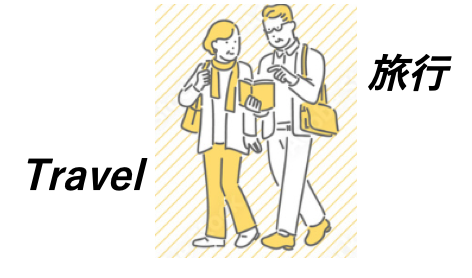
Regional Revitalization and Tourism
In Japan, where the population is aging and the birthrate is declining, various attempts are being made to bring back people who have moved to big cities and revitalize the regions (regional revitalization). One of these is tourism to enjoy the history of the region and the nature that cannot be found in big cities.
Traveling away from one’s home was already a thing in the Edo period. Examples include the visit to Ise Shrine from Edo to pray for blessings and the pilgrimage to 88 temples and shrines in Shikoku. All of these have a spiritual background. In the West, there is a long history of travel to visit Christian, Islamic, and Buddhist holy sites from far away. On the other hand, modern tourist travel is based on the emergence of leisure time in modern and contemporary times, and the main purpose is to seek relief from the fatigue and tension of everyday life and to enjoy it.
Is it possible to revitalize regional areas through tourism? What about tourists from overseas who play a part in this? It is said that in 2024, there will be 38 million foreign visitors to Japan, and their spending will reach 8.1 trillion yen. Approximately 30% of these tourists (approximately 10 million people) visit regions other than urban areas such as Tokyo and Osaka. There seems to be no room for debate about the role that tourism plays in revitalizing regional areas. Foreign environmental tourists visit regional areas because they want to differentiate themselves from others in Japan tourism and have a more unique experience. This also applies to Japanese tourists. There are four main factors for tourism: climate, nature, culture, and food. In addition to these tourism factors, tourism today is required to take into account the sustainability of tourist destinations, and this is collectively referred to as sustainable tourism. For example, tourism linked to the United Nations’ SDGs.
As for Awaji Island, they produce a lot of renewable energy through wind power and other sources. The Naruto whirlpools could potentially be linked to tidal power generation. There is also an experimental plant in Goshiki, central Awaji, that produces biofuel. Tourism related to nature and culture is also popular in Awaji Island, where the myth of the creation of the country is based. Onokoro Island (Eshima), which is said to have been the first island in the Japanese archipelago to be created by a god, attracts many tourists. There is also Izanagi Shrine, which enshrines the husband and wife gods Izanami and Izanagi, who created the country as described in the Kojiki. Recently, tourism that visits places set in manga as sacred places has been attracting attention, and is called anime tourism. Although it has only just begun, Nijigen no Mori, located in a prefectural park on Awaji Island, aims to become a sacred place by creating anime-related scenes within the park.
In rural areas, experience-based tourism that allows people to participate in local events and festivals is popular. Pasona Noentai has been developing abandoned farmland in Awaji for the past 10 years, promoting pesticide-free agriculture, and has also been working to develop human resources related to agriculture. This month, on July 19th, they will open a stay-type agricultural experience resort (Hatake Resort; Sansan Farm). Eleven farmhouse-style accommodation facilities have been built by cutting-edge architects, and visitors will be able to experience farming by working on adjacent farmland.
Rice has recently become a social issue, and there is criticism that the decline in rice production is partly due to the government’s rice production reduction policy. A major challenge for Japan in the future will be to rethink agriculture, including increasing rice production, and it would make sense to link this with tourism.
Reference; Easy-to-understand Sociology of Tourism, by Katsumi Yasumura et al., in Japanese Minerva Shobo (2011)
Awaji Island’s tourism features (by Awaji City and Hyogo prefecture office)
Location and transportation
*An urban island connected to Honshu and Shikoku by bridges
*All spaces on land, sea, and air are main transportation streets
Food and energy
*An island rich in food, known since ancient times as “Miketsukuni”
*An environment that produces natural energy
*A model region for a decarbonized society
History and traditional culture
*A history not found in other regions
*Awaji puppet theater and festivals rooted in the region
Blessings of nature
*A rich natural environment surrounded by mountains, seas, and rivers
*A mild climate and biodiversity
Personality
*Gentle and kind disposition, close relationships between people
*Active neighborhood relationships (culture of sharing)
